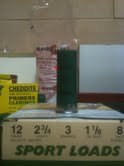The bushing charts show what a # X bushing will drop for a specific powder...and sometimes what we want to drop is between bushings. So we've long looked for a way to "tighten" one up or ream one out a little. Reaming one out on a lathe or a drill press is pretty easy ...just get it spinning and touch it with a little bit of emery cloth...and go easy / they're soft. / and then I use a dremel - to remark them, once I've monkeyed with them a little ...and go over my new marks on it with a black permanent marker.
The "old way" of tightening up a bushing ... is to use fingernail polish on the inside / and then polish it a little with fine emery cloth ...to tune it, so it drops exactly what you want... I wouldn't put tape in there.../I'd be constantly worried about it loosening up ...
But none of those techniques address the variation problem you're having ..
I clean the bottles inside and out with dryer sheets / and one indication of having a static problem is if you have small flecks of powder sticking to the side of the container. I also store my open cans of powder - with dryer sheets inside the containers / and wipe those containers down with them as well. How big an issue this is depends on how dry the air in your home is ...some climates have more issues than others.
The "old way" of tightening up a bushing ... is to use fingernail polish on the inside / and then polish it a little with fine emery cloth ...to tune it, so it drops exactly what you want... I wouldn't put tape in there.../I'd be constantly worried about it loosening up ...
But none of those techniques address the variation problem you're having ..
I clean the bottles inside and out with dryer sheets / and one indication of having a static problem is if you have small flecks of powder sticking to the side of the container. I also store my open cans of powder - with dryer sheets inside the containers / and wipe those containers down with them as well. How big an issue this is depends on how dry the air in your home is ...some climates have more issues than others.
Last edited:

